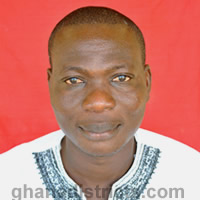Population Size and Growth Rates
According the 2010 Population and Housing Census, the Ada West District has a total population of 59,124 with females slightly outnumbering their male counterparts. The Census showed that the female population of the district is 30,545 representing 51.7 per cent of the total district population while the male population of 28,579 represents 48.3%. The population of the district represents only 1.5% of the population of Greater Accra. The District is newly created one and lack data for a comparative analysis of the trend in growth and therefore the Regional growth rate of 3.1 % would be used to project for future population.
Age and Sex Distribution of the Population
The age and sex distribution of the total population in the district (PHC2010) indicates that the 0-14 age cohort is 25,298 representing 42.8% of the total population. The population of those within the 15-64 age cohorts is 31,016 also representing 52.4% while the aged group, 65 years and above, is 2,810 which is approximately 4.8%. Comparatively, the total number of dependants population (0-14 year and 65 year and above) is lower (28,108) than the number of the economically active population (31,016) which implies that the economically active population has the capacity to support the dependent population.
It can be observed that out of the 25,298 who are aged 0-14 year, as much as 70% of them are in the rural area and only 30% live in the urban areas of the district. The implication is that there would be the need for adequate resources allocated to provide the essential social facilities and services for building a strong foundation for these children. The table below shows the data on the population of cohort by sex.
Table 1.3.1: Population by cohort by sex
Age Cohort | Both Sex | Sex | Type by locality | ||||||||||||
Total | % | Male | % | Female | % | Urban | Rural | ||||||||
0-14 | 25,298 | 42.8 | 12,868 | 45.0 | 12,430 | 40.7 | 30.3% | 69.7% | |||||||
15-64 | 31,016 | 52.4 | 14,622 | 51.8 | 16,392 | 53.7 | 29.8% | 70.2% | |||||||
65 and above | 2,810 | 4.8 | 1,089 | 3.8 | 1,723 | 5.6 | 23.5% | 76.5% |
Total | 59,124 | 100 | 28,579 | 100 | 30,545 | 100 | 29.7% | 70.3% |
Age –Sex Structure
The age structure of the district shows a broad base pattern that gradually tapers off with increasing age as illustrated in Figure 2.1. The broad base of the population pyramid indicates that the population of the district is very young. This means that many resources will be needed for the provision of schools, health care facilities and employment opportunities for the youth
Fig. 1.3.1 Population by Age, Sex
Sex Ratios
From the 2010 Population and Housing Census, the sex ratio of the District is 93.6. This implies that, there were about 94 males to 100 females in the District. At a glance, it shows that, the females have out numbered their male counterparts in the district. In comparison, the regional and district ratios are the same but both are slightly lower than the national figure of 95.2.
From the data, the sex ratio for age group 0-14 is 103.2 while 15-64 is 89.2 and the sex ratio for age group of 65 and above indicates 63.1 This implies that for the age group between 0-14, the males outnumbers the females population but the trend changes drastically with the age group 15year and above where the females population increase more than the males. The possible explanation to this phenomenon could be attributed to the more males migrating out of the district to either further their education or to look for employment opportunities.
District 28,579 30,545 59,124 93.6
Regional 1,938,225 2,071,829 4,010.054 93.6
National 12,024,845 12,633,978 24,658,823 95.2
Source: Ghana Statistical Service, 2010 Population and Housing Census
Note: (Sex ratio is given by Males to 100 Females)
Age – Dependency Ratio
The dependency ratio is one of the key indicators of socio-economic development. It is the ratio of dependent population (those under 15 years and 65 years and older) to those in the economically active group (15 to 64 years) in a given population. The age-dependency ratio is often used as an indicator to measure the economic burden the productive population must carry.
The Table 1.3.2 shows that the age-dependency ratio for the district is 90.6 for both sexes and it is greater than the regional value of 53.4 and the national figure of 76. Comparatively, the male dependency ratio (95.8) is higher than the female (86.3). 12
Assemblies Dependency Ratios Locality
Male Female Total Urban Rural
National 76
Regional 54.4 52.5 53.4 51.7 71.7
District 95.8 86.3 90.6 90.2 90.8
Source: Ghana Statistical Service; 2010 Population and Housing Census
Rural-Urban Distribution of the Population
The Ada West District is relatively rural. The rural-urban classification of localities is population based on the Statistical Service classification with population of 5000 and above being urban, while community with population less than 5000 classified as rural. The district has more than two-third of the population (70.31%) living in rural areas while less than one third (29.70%) of the population living in urban settlements. Some of the major settlements are Sege, Anyamam, Akplabanya, Koluedor, Koluedor, Lolonya, Wokumagbe, Bornikope and Goi with population above 2000.
The Ada West District is made up of approximately 52 communities with the coastal communities being relatively more compact as compared with the dispersed nature of communities in the inland. The distribution of the communities along this classification determines the varied needs and economic conditions prevailing in each locality. The table below show population in the largest 20 communities in the district.
Table1.3.4: 20 largest communities
Community | Sex | Age group | House hold | Houses | |||||||||||
Male | Female | Total | 0-4 | 5-9 | 10-14 | 15-19 | |||||||||
Anyamam | 3,055 | 3,409 | 6,464 | 1,069 | 1,024 | 891 | 735 | 1,080 | 581 | ||||||
Sege Junction | 2,833 | 3,157 | 5,990 | 896 | 833 | 769 | 738 | 1,402 | 750 | ||||||
Akplabanya | 2,500 | 2,601 | 5,101 | 817 | 671 | 696 | 618 | 1,040 | 387 | ||||||
Goi | 1,707 | 1,950 | 3,657 | 469 | 447 | 399 | 381 | 728 | 464 | ||||||
Koluedor | 1,410 | 1,641 | 3,051 | 382 | 330 | 318 | 345 | 725 | 384 | ||||||
Lolonya | 1,160 | 1,283 | 2,443 | 404 | 377 | 282 | 284 | 435 | 306 | ||||||
Toflokpo | 1,144 | 1,213 | 2,357 | 372 | 315 | 284 | 265 | 435 | 269 | ||||||
Adzomanukope | 1,081 | 1,212 | 2,293 | 423 | 351 | 282 | 251 | 436 | 256 | ||||||
Bornikope | 1,109 | 1,166 | 2,275 | 319 | 349 | 325 | 219 | 404 | 269 | ||||||
Matsekope | 971 | 1,006 | 1,977 | 288 | 272 | 259 | 236 | 364 | 179 | ||||||
Wokumagbe | 765 | 863 | 1,628 | 314 | 233 | 172 | 171 | 266 | 157 | ||||||
Migration/ Immigration
From the 2010 PHC, the total number of migrants (15,283) forms 25.8% of the total population that constitute the population in the district. Of the total number of migrants, more than half (54.0%) were born elsewhere (that is, outside the locality of enumeration) but in the Greater Accra Region. Amongst those born in the Greater Accra Region, 18.3% had resided for less than one year, 27.7% had resided for between one and four years whereas more than half (53.9%) had been in residence for at least 5 years. With regards to migrants who were born in another region, those from Volta (15.6%) and Eastern (11.1%) regions were in higher proportions. Less than five per cent (4.6%) of the migrants were born outside the country.
SPATIAL ANALYSIS OF SETTLEMENTS
Spatial Distribution of Population by Settlement
The District is predominantly rural with only three settlements reflecting urban status. With the District population of 59,124, over 70% are living in rural areas. The situation has also led to the over concentration of the services in the District Capital, Sege and other settlements including Kuloedor, Anyamam, Goi and Akplabanya.
Spatial Analysis of Settlement System- Functional Matrix (Scalogram)
An urban hierarchy categorises communities according to their importance in terms of the functions that they provide. Functional importance is reflected in the range and amount of services and facilities. The Functional Matrix indicates the number of functions performed by a community in a district. In the spatial analysis in Ada West, 34 services were used in the process, and most of these services include those related to basic needs and necessities of life. From the analysis, it is observed that Sege, the District Capital, performs over 25 functions including the
higher educational institution in the district. It can also be observed that Anyamam with highest population performs comparatively lower function of 19 as compared to Sege.
The analysis again shows that with respect to the distribution of facilities, rural areas are more disadvantaged even though approximately 70% of the population are found in these areas. Apart from the provision of basic social amenities such as primary schools and potable water, majority of the communities lack higher level of services such a bank, LPG station, internet facility, Filling station, and access to improved health services. It means therefore that population in the rural areas have to travel long distances to access these essential facilities.
This gap has contributed to the slow pace of development in the district. It is therefore important to ensure that, subsequent interventions will be spread out to ensure increase in access to these services to achieve a holistic development of the entire District. The analysis also indicates available opportunities to be exploited by the private sector.
Functional Hierarchy of Settlements
By functionality, Anyamam, Sege, Koluedor, perform more than 10 functions each of the 34 services used in the analysis. Sege score a total centrality index of 2,127, Anyamam, 532, and Koluedor had 532. Sege therefore was classified as the first order in the functional hierarchy settlements while Anyamam and Koluedor fall under the second order. The score of Sege situation may be explained by Sege’s strategic location, as a nodal town and hence its influence to attract immigrants and the polarization of investments and functions.
Apart from Anyamam, Sege, Koluedor and Akplabanya, all other settlements used in the analysis perform less than 15 functions even though some of the settlements have population above 1,000. This explains how inaccessible most of the services are outside the reach of majority of the population. Most of the people at this level are mainly peasant farmers and situated far away from important social services. The further away a community is to social and economic facility the greater the poverty level.
The District’s spatial development focus should therefore consider an integrated approach for identifying economically viable settlements for development into growth poles. An attempt should be made to spread investments to settlements like Bornikope, Matsekope and Lolonya among others to offload the pressure in Sege
Date Created : 11/16/2017 8:55:52 AM






 facebook
facebook twitter
twitter Youtube
Youtube TOLL FREE 0800 430 430
TOLL FREE 0800 430 430 +233 593 831 280
+233 593 831 280 GPS: GE-231-4383
GPS: GE-231-4383 info@ghanadistricts.com
info@ghanadistricts.com Box GP1044, Accra, Ghana
Box GP1044, Accra, Ghana